April 21 – June 10, 2014
Field Report
The Revegetation Project is moving in exciting new directions and expanding its scope. The goal for 2014 is now to produce 15,000 trees in the greenhouse. 13,000 of them will be distributed to locals and 2,000 trees will be planted and maintained directly by Planet Drum.
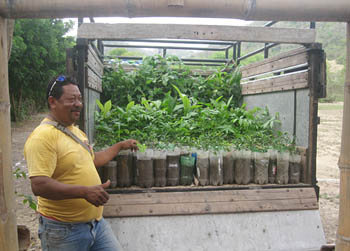
Revegetation workshops held at the greenhouse are an important way to get locals involved in the forest restoration process and numerous schools are enthusiastically participating. For example, Fanny de Baird School (one of the largest in Bahía) has approximately 600 students who will visit the greenhouse this year. It is possible that about 1,000 students from various local schools will have the opportunity to visit the greenhouse and participate in workshops by the end of 2014. In addition to learning about the project and participating in transplanting trees, each student who attends takes a tree home to plant. We are currently focused on handling this dramatic increase in educational workshops and the plethora of local students who will be visiting the greenhouse.

In preparation for these developments we have removed (and donated) nearly all of the trees from 2013 that were still in the greenhouse. New seedbeds have been planted with Chirimoya, Pechiche, Guachapeli, and Caoba trees to ensure that we will be well stocked with new trees for transplanting.

Materials such as rice hulls, for mixing soil, have been secured. Additionally, new sources for compostable materials have been lined up so that our compost production has also increased. Last week, during three workshops, 104 students from Fanny de Baird came to the greenhouse.
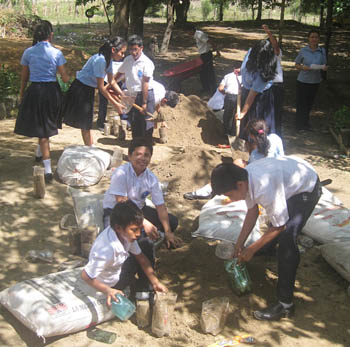
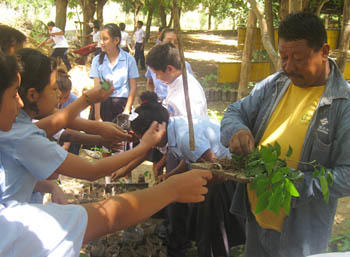
New government mandates for education require that schools create clubs and that each student must spend 3 hours a week participating in club activities. Clubs include Ecology, Sports, Nutrition, Chess, etc. Each school has created at least one ecological club, and in some cases, multiple eco-clubs. Fanny de Baird, due to its size, will have 5 eco-clubs with 30 students in each club. Planet Drum is coordinating with various schools to assist in activities for these clubs. Potential activities include composting and organic gardening as well as native plant revegetation.
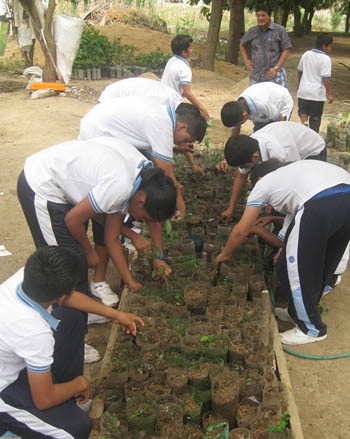
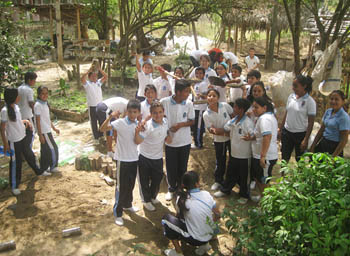
In other news, Planet Drum is now an official member of the Corporación Nacional de Bosques y Reservas Privadas del Ecuador (CNBRPE) (National Corporation of Forests and Private Reserves of Ecuador) and the Planet Drum land has been registered as a Private Nature Reserve with the Ministry of the Environment. As a Private Nature Reserve we are also an active member of the Cordillera del Bálsamo, which is a biological corridor between Bahía de Caráquez and San Clemente, with nearly a dozen other registered private land owners who are committed to ecological conservation and restoration. Depending on the levels of support from the government and local interest in conservation, Cordillera del Bálsamo could become a true Dry Tropical Forest biological corridor with local human activities focused on ecologically sustainable modes of production (paisajes productivos – productive landscapes) and a slew of restoration projects including revegetation and reforestation work.
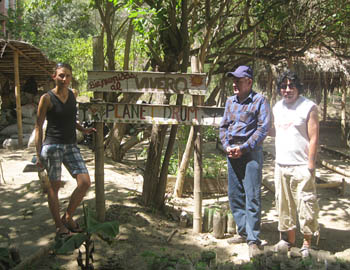
In late May, the President of CNBRPE and several other representatives visited the NODO Manabí to show their support for the recent developments in the region. While in Bahía, they had the opportunity to visit the Planet Drum greenhouse and see first-hand our operations. They were all impressed with our initiatives and grass-roots approach towards ecological restoration. The CNBRPE provides a way for individual land-owners interested in conservation to join a larger group of similarly-minded parties so they have more support than acting alone.
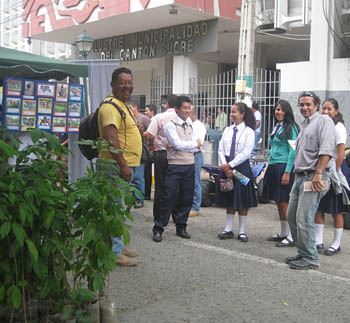
On June 5th, Bahía celebrated the International Day of the Environment. Cordillera del Bálsamo members organized an open house in front of the Bahía Municipality. Various local ecological organizations gave presentations on the work that they are implementing in the region. Planet Drum brought trees from the greenhouse (59 Naranja, 20 Cedro, 20 Guachapeli, 38 Guava de Machete, 33 Chirimoya, 3 Almendra, 41 Mandarina, 16 Guayacan, 4 Papaya, 68 Guayaba, and 53 Pechiche; 355 in total) to distribute to locals who came to visit the exhibition.
The event was open to the general public and several local schools received invitations to bring groups of students. Three different schools, (Vicente Hurtado, Fanny de Baird, and Montufar, all of which participate in PD workshops) sent classes. We avoided giving trees to the students at the event, since they will receive a tree when they visit the greenhouse.

There was a tremendously positive reception to the event. Over the course of the morning, all of the PD trees were passed out to locals who expressed an urgent desire to participate in revegetation. Revegetation Manuals were also distributed to numerous important local officials, school professors, and others who showed an extra interest in the projects. Some of the visitors exclaimed, “I’m going to reforest!” Many stuck around to discuss various aspects of ecological issues which face the region, including a few who expressed distress at the levels of pesticides and chemicals that are used in agricultural practices throughout the region, an area which badly needs attention.
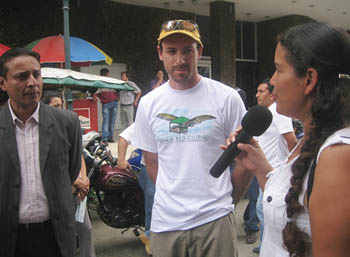

Halfway through the event, the new Mayor of Bahía, Manuel Gilces, and several members of his administration visited the various stands and presentations. I had the opportunity to introduce him to Planet Drum and our programs. In addition to saying that he would like to visit our greenhouse himself, he stated that he planned on having the municipality participate more actively in the Eco-City and related projects. His enthusiasm seemed sincere. We’ll have to see how dedicated to the environment he really is, but so far there appear to be promising developments in the ecological realm for Bahía and the greater region.
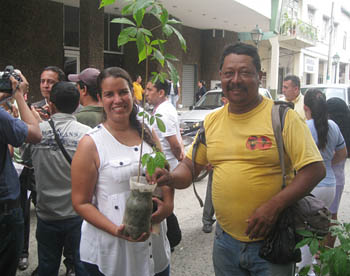
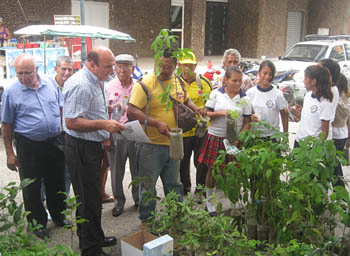
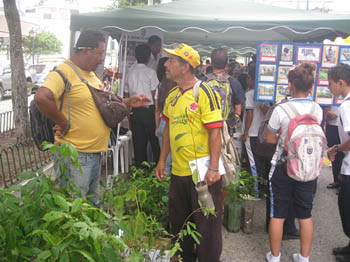

Finally, official reports now state that there is an 80% chance that an El Niño will develop by the end of this year. See NOAA’s ENSO Diagnostic Discussion update from June 5th. Although the intensity of this climate event is still difficult (impossible) to predict at this point, for the coastal region of Ecuador, this means rain and lots of it.
Supporting evidence for El Niño predictions was provided by Guayacan trees in the region, which flowered on May 28th. Guayacans are famous for signaling the onset of the rainy season and typically flower in November or December, about a month before the rains begin.

Pásalo bien,
Clay

Reader Interactions